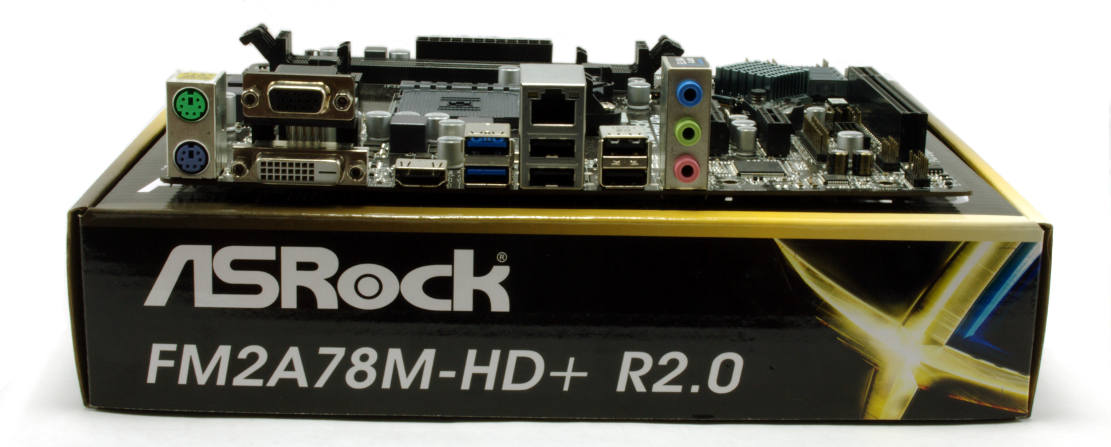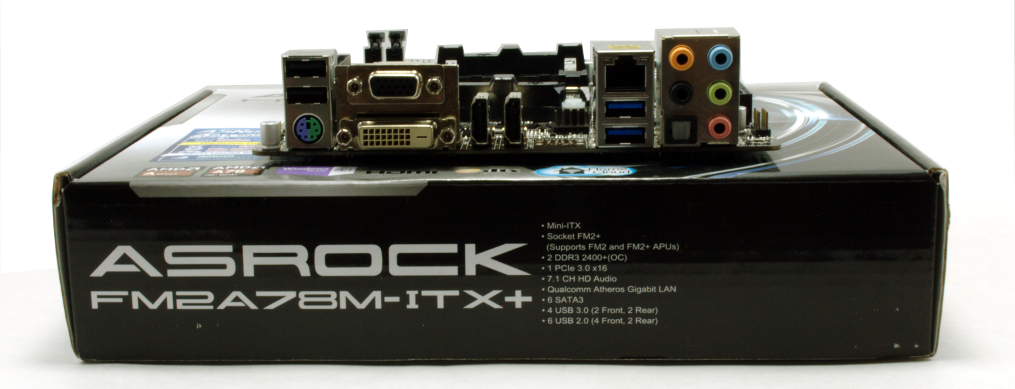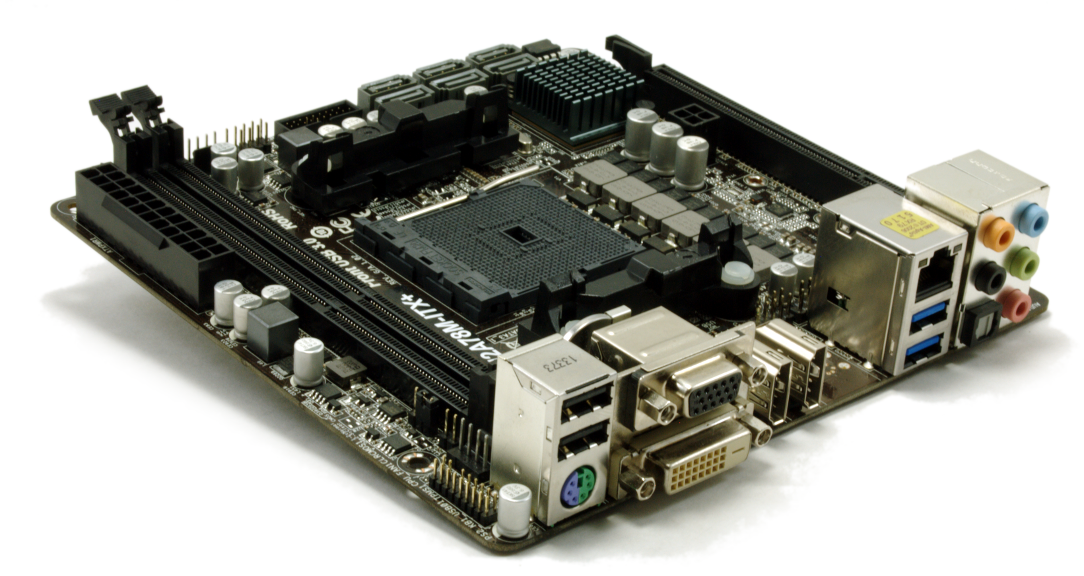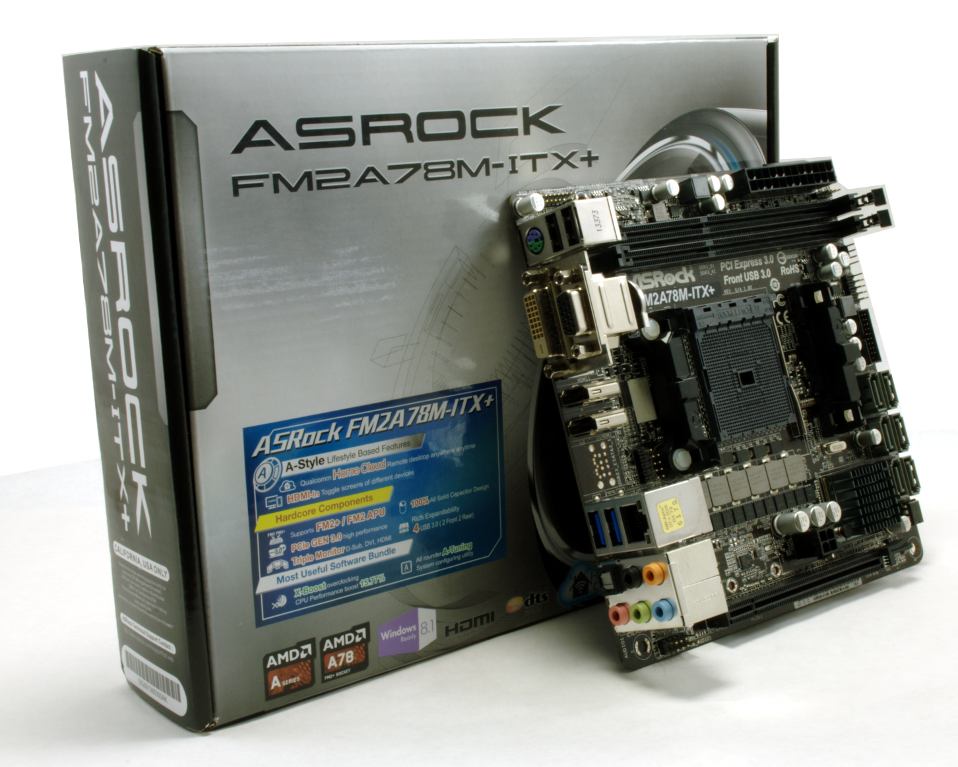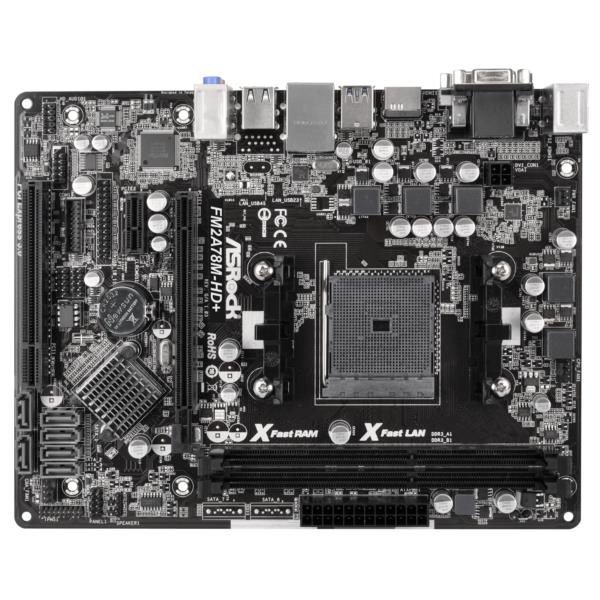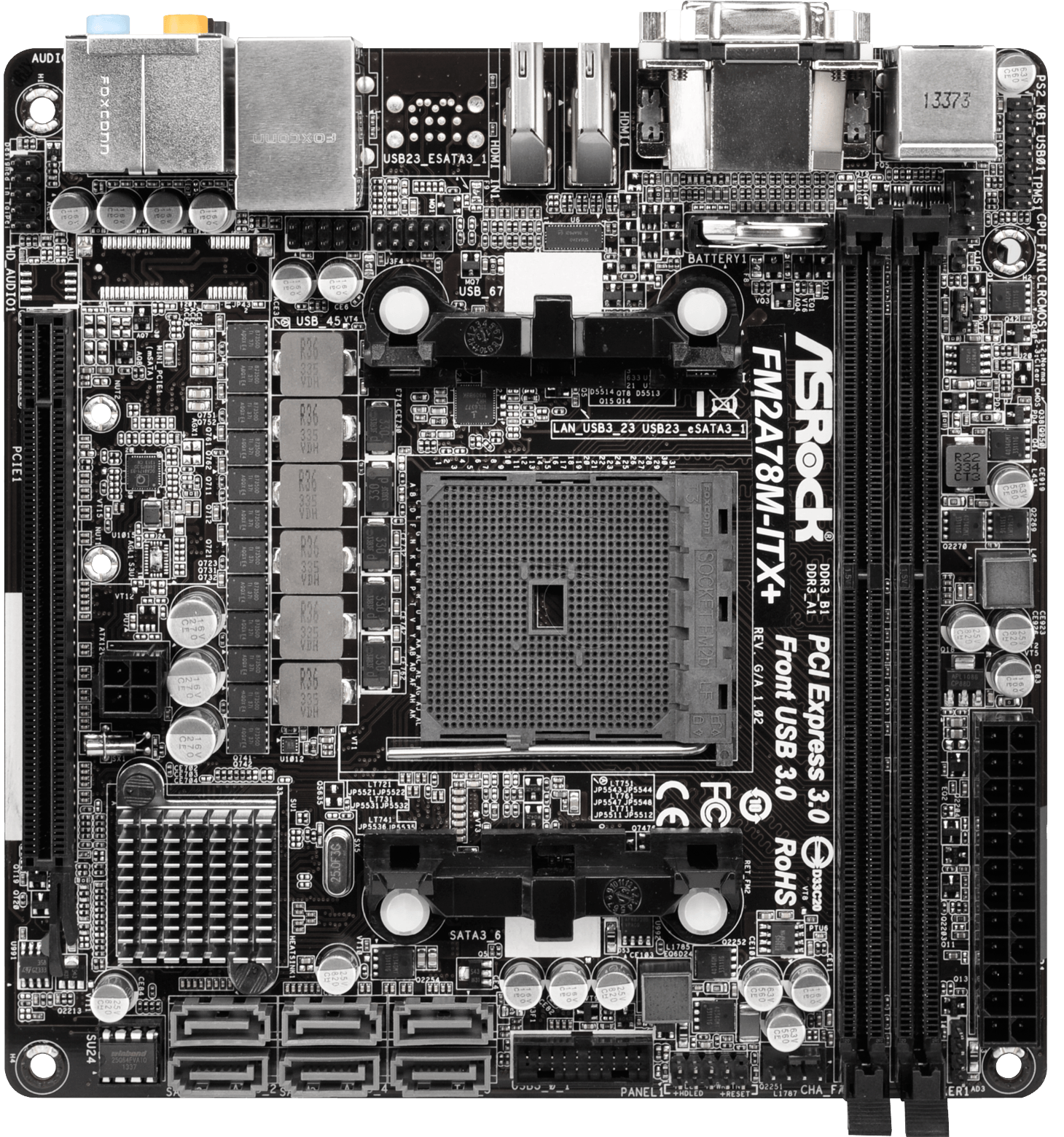ASRock FM2A78M-HD+ & FM2A78M-ITX+ Review
Today, we have a pair of AMD FM2+ boards from ASRock on the test bench: the FM2A78M-HD+ and the FM2A78M-ITX+.
Why you can trust Tom's Hardware
FM2A78M-HD+ & FM2A78M-ITX+ Layout
ASRock FM2A78M-HD+
First up is the ASRock FM2A78M-HD+ R2.0 (or the HD+). This Micro-ATX board measures in at 9.25 x 7.25 inches and contains the usual back-panel connectors: two PS/2 ports, four USB2.0 and two USB3.0 ports, gigabit Ethernet, Line-in, front speaker and microphone jacks, and VGA, DVI, and HDMI connectors. Upon physical inspection of the product, I saw that an ELNA Audio sticker covers the audio jack connectors. Along with its placement on the sticker, the product name is clearly identified above the PCIe x16 connector, and the Rev 2.0 designation is silk screened onto the PCB.
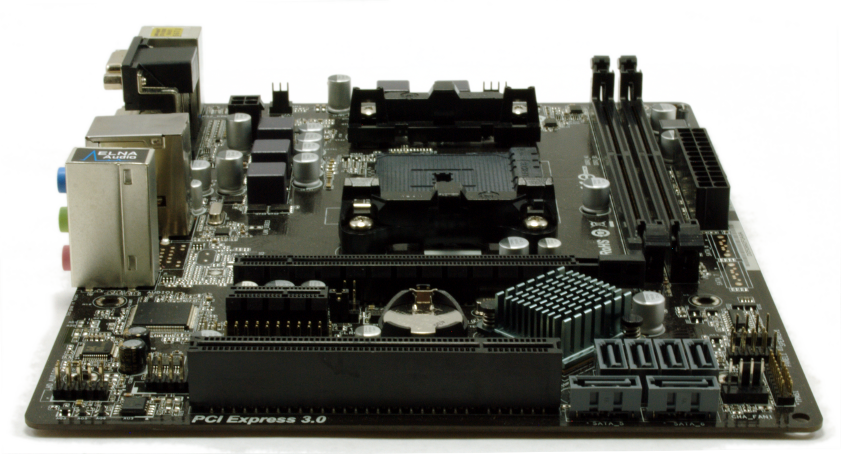
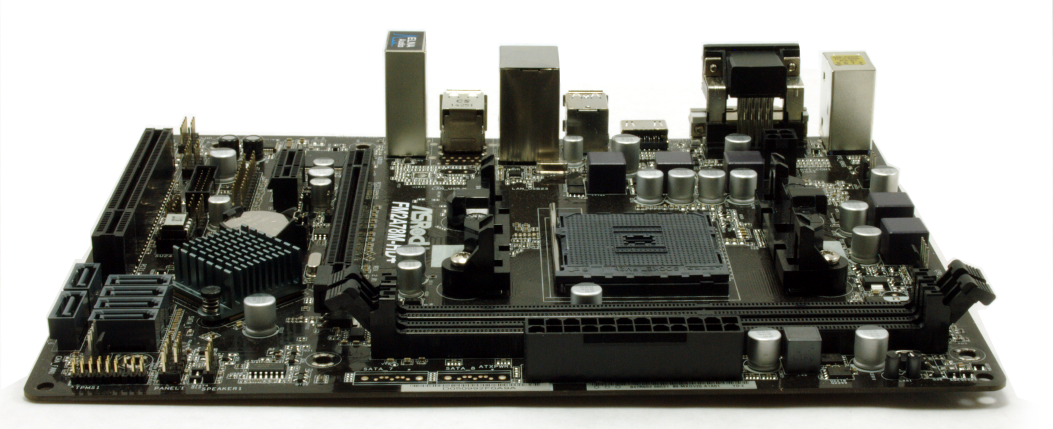
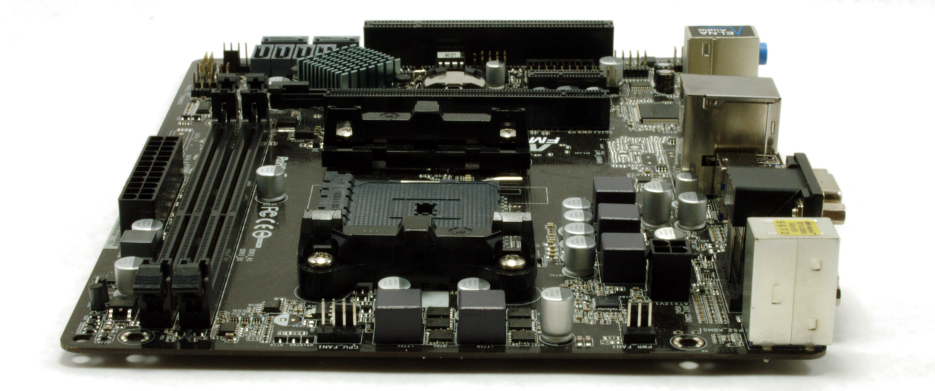
On the bottom right of the board, six SATA connectors are tightly bunched together immediately next to the chassis fan connector, which might cause problems for those who deploy full SATA configurations or an expansion card in the bottom PCI slot. Moving up the right side of the board, I encountered the front-panel button connectors and the speaker, as well as the ATX 24-pin power connector. Two DIMM slots are very close to the ATX connector, so some high-performance memory DIMMs could pose a problem when routing the PSU's big bundle of cables. The top side of the board contains the CPU fan (PWM) connector and PSU (3-pin) fan connector, both of which provide ample clearance for cable management. Below the PSU fan connector, only one 4-pin 12V connector is available, for additional CPU power.
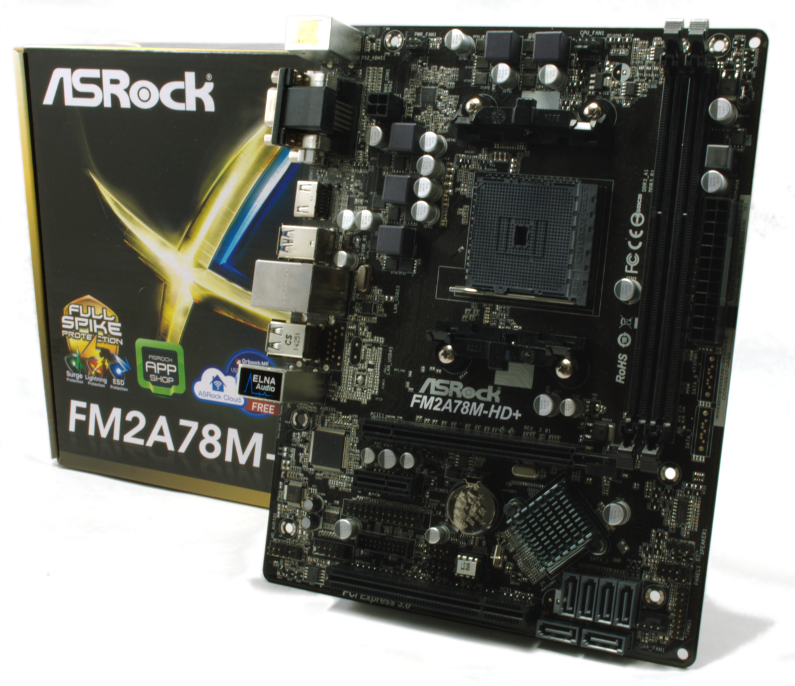
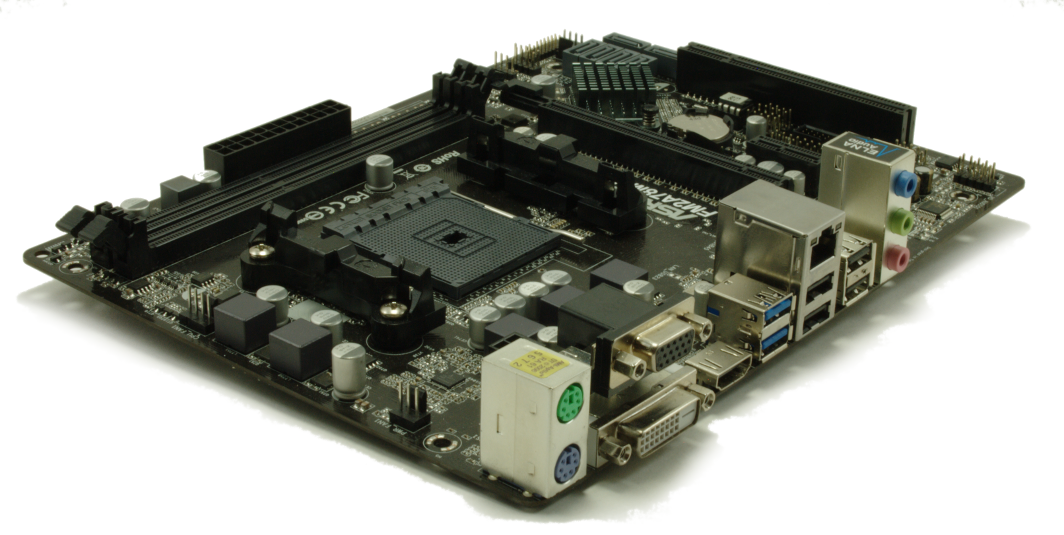
The packaging for the motherboard is full, on both the top and bottom, of marketing logos for ASRock's various features. Given the target price, the bundled cabling includes two SATA cables, support CD, and quick installation guide. Overall, I am quite pleased with this board's featureset and layout, so I look forward to seeing its performance.
ASRock FM2A78M-ITX+
The ASRock FM2A78M-ITX+ (or the ITX+) is the smallest board I've tested, measuring in at 7 x 6.75 inches. Packing all of these features into this small a footprint requires some concessions, however, this board also has features the other contenders have failed to provide. The back panel is where we get the most variance: I now have access to only 1 PS-2 connector for legacy input devices, but I gain an HDMI-In, an SPDIF Out and HD audio jacks. For an HTPC box, this appears to be the best out-of-the-box solution for critical HTPC requirements.
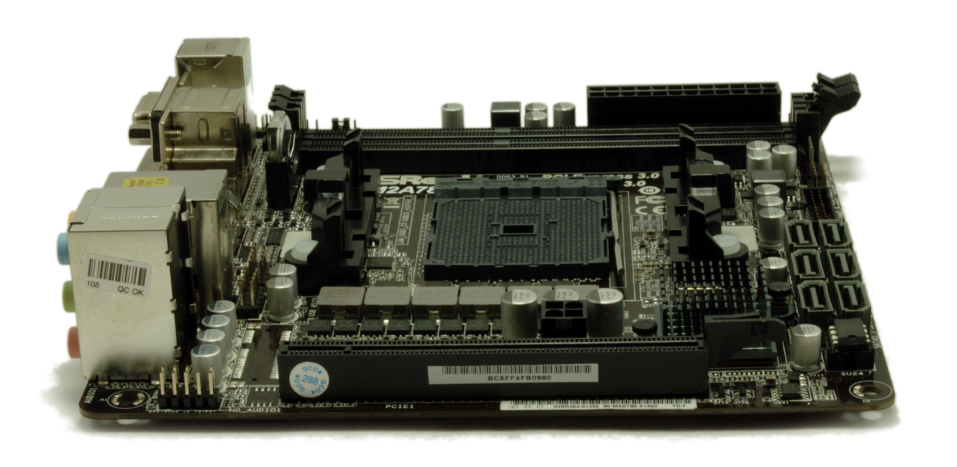
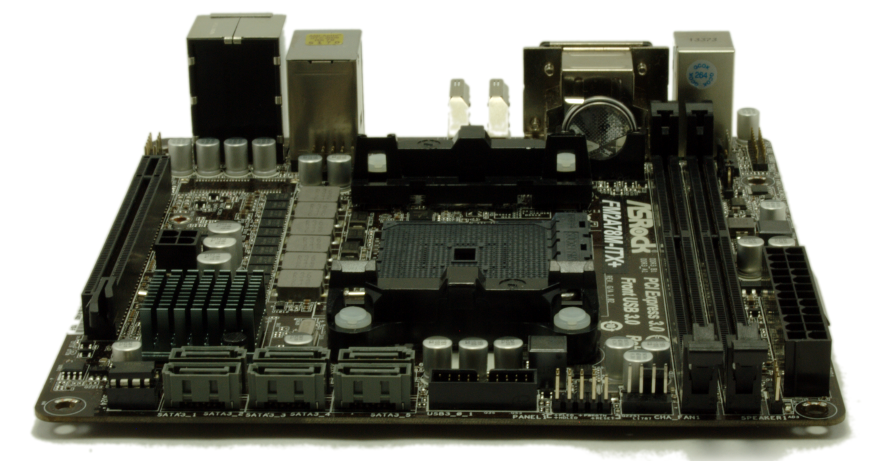
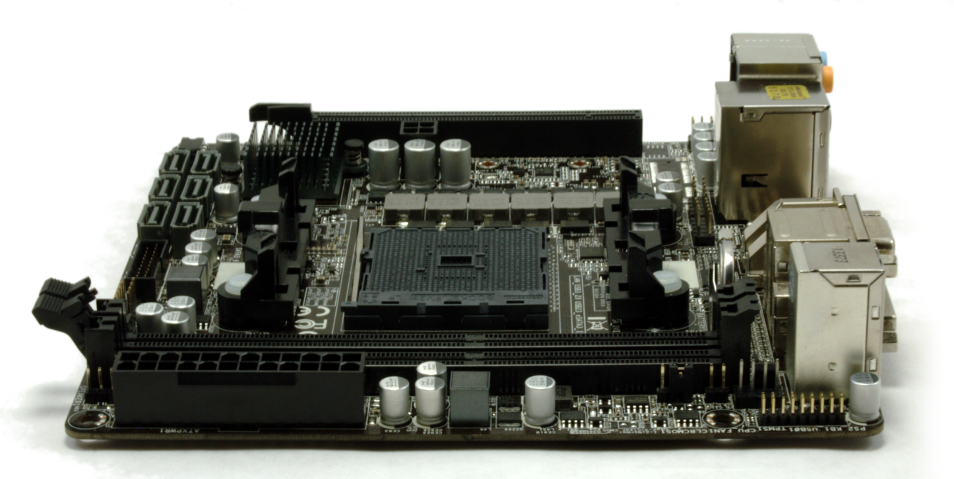
Since there are two inches missing on the PCB compared to the other MicroATX boards I've seen, this Mini-ITX board only has access to one PCIe x16 connector, and it is located on the very bottom of the board. With my setup, the GPU's heat sink hangs over the edge of the board, so keep that in mind when selecting components. Moving along the right side of the board, the SATA connectors are neatly lined up in two columns and seem a bit more organized than the HD+. Tiptoeing along the right side of the board, we come across our chassis fan connector (PWM) right below the DIMM slots and the front-panel pins. The topside has the ATX power connector in a similar orientation to the HD+, so DIMM selection will be critical. At the opposite end of the DIMM slots, the CPU fan connector is located right between the case screw and the USB panel.
In addition to the lack of real estate, ASRock rotated the APU socket by 90 degrees along with all of the voltage regulators and chokes. The company also removed the heat-sink bracket on the back of the board, so caution is required when using larger heat sinks. The chokes are also so close to the socket that my heat sink covered them and could prove hazardous to cooling. I would highly recommend installing a downdraft heatsink fan, especially if this is going into a smaller enclosure. Also, the 12V 4-pin connector is located between the regulators and the PCIe x16 connector, which turns out to be very awkward.
Deviating from the traditional ASRock type font, this packaging has a definite futuristic theme and emphasizes the style of this product. Will the enhanced featureset prove valuable to builders, or will the cramped configuration prove to be too much of a hindrance?
Get Tom's Hardware's best news and in-depth reviews, straight to your inbox.
Current page: FM2A78M-HD+ & FM2A78M-ITX+ Layout
Prev Page Specifications, Firmware & Software Next Page How We Test, Results, Power, Temperature & Overclocking-
FCsean At the time of this writing, three of the four boards retail for an average of $60. However, the ITX+ board is retailing for nearly 60 percent more at $84.99!Reply
Not sure how 84.99 is 60% more than 60. maybe 40%. -
ktolo I still don't know why i keep seeing APU's tested with 1600 memory.. when the world and his dog knows that when you pair these chips with faster memory it unlocks a fair bit more performance. 2133MHz minimum for these APU's - the 7850K can work with 2400MHzReply -
Onus ktolo, you have a point for actual use, however he did mention in the beginning we're all using the same RAM which can allow some direct comparison across all our motherboard review articles.Reply
For my part, as I test a variety of systems, despite sometimes notable benchmark differences, there is little practical difference in the end-user experience. In the bad old days of single and dual-core CPUs, everything mattered at the margin; now I think that is less true. This may be why AMD still manages to sell CPUs, as long as the price is right. Intel may indeed run rings around them, but in actual use the difference doesn't feel that great. -
TheTerk ReplyAt the time of this writing, three of the four boards retail for an average of $60. However, the ITX+ board is retailing for nearly 60 percent more at $84.99!
The ITX+ retails on Newegg for $95 bucks. It is currently on sale for $84 and it looks like the rebate is still available until the end of January.
Not sure how 84.99 is 60% more than 60. maybe 40%. -
Crashman We love the Terk. Unfortunately, motherboard companies aren't loving AMD at the moment: Getting samples has been a problem. So if anyone knows about something released in the past year that we should have tested, speak up and we'll pester those companies.Reply -
damric I have been known to crossfire on the A88X platform. The platform has numerous advantages over AM3+, including PCIE 3.0, CPU on-die northbridge, and lack of Hyper Transport bottleneck. Also Steamroller cores have more IPC and twice as many decoders per module as Piledriver cores. I'm not sure why anyone would purchase an AM3+ platform at this point actually, unless getting one very cheap second hand.Reply -
RedJaron Jake, as you say, A88X boards tend to have somewhat better components than A78 boards. To the APU tweaker and tuner, the higher quality board would be appreciated in OCing. The value of FM2 and APU OCing is of course a whole 'nother topic, but if you're going to do it, I would generally prefer an A88X board.Reply
You are quite right that a media and HTPC can do well on the cheaper A78, just like I'd go with a B85 or H81 on the Intel side for such a machine. -
logainofhades The newegg link, for the M-ITX board, on the last page, takes you to the M-ATX one, for some reason.Reply -
Rexolaboy DDR3 1600mhz with an APU? At least see how adding the 2133mhz ram improves performance. We see overclocked GPU's in reviews, you even oced the CPU in this review, but 1600mhz ram is almost pointless in an APU platform, especially when the price difference is maybe $10-$15 for 2x4 gb. I would have liked seeing a current review of AMD Dual Graphics with the motherboard and new Crimson Drivers. Guess I'll have to watch more foreign youtube videos.... :(Reply
